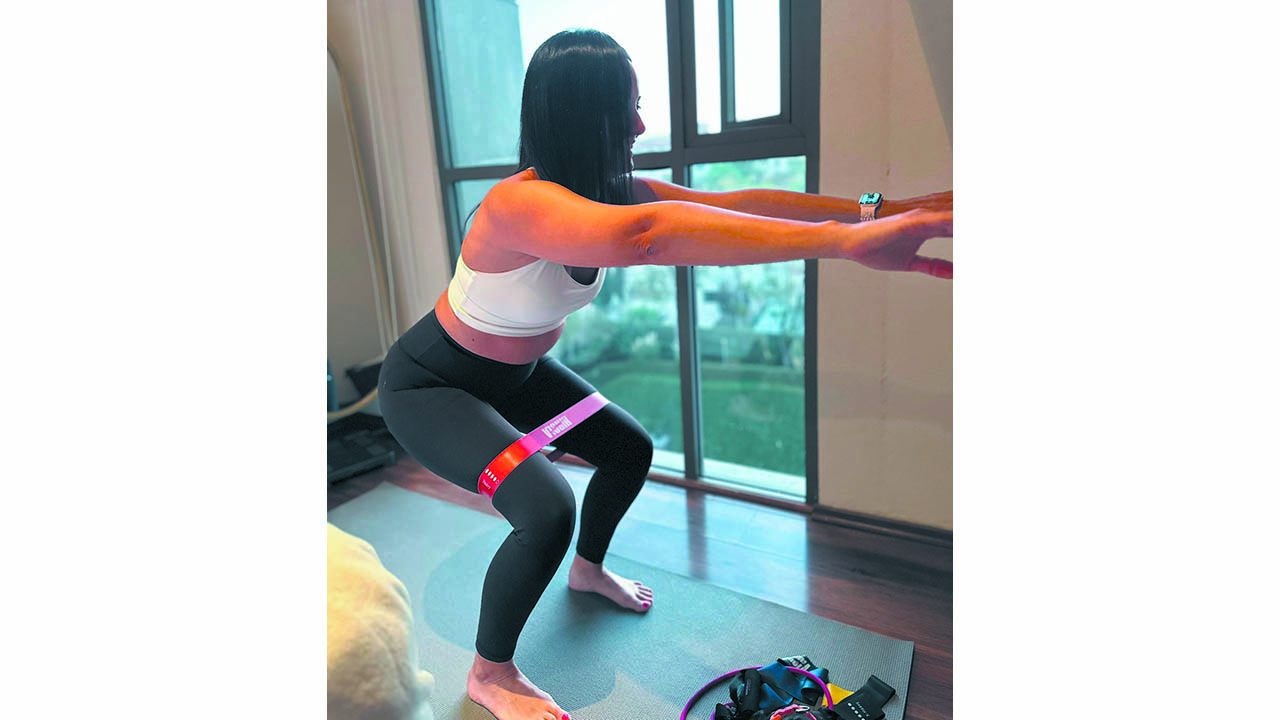Dorm-friendly low-impact exercises
 CREDIT: MAURICIO PRADO
CREDIT: MAURICIO PRADOThese low-impact exercises give you the freedom to work out in your apartment without disturbing your neighbours.
Have you ever wondered what low-impact exercises you can do in your apartment or dorm without bothering your neighbours? We have the answers.
First, we need to understand what low-impact exercises are. According to health and wellness professional Ashlee Wilhelm-Pedlow, low-impact exercises are those exercises that cause less impact on your joints.
“Some high-impact exercises usually involve jumping,” Wilhelm- Pedlow explained. “Squat jumps and jumping lunges are some examples. Low-impact exercises are the opposite of those things. It is taking out the jumping part of the exercises.”
She said low-impact exercises are ideal for dorms and apartments because they do not disturb anyone else by doing them.
“When jumping, if you are in an apartment or dorm, that jumping usually disturbs the people below or even the people next to your apartment,” Wilhelm-Pedlow said.
According to Wilhelm-Pedlow, many different training styles can be used while performing these exercises.
“Resistance bands are equally as effective as any other sort of resistance,” Wilhelm-Pedlow said. “They are also usually relatively affordable compared to dumbbells and barbells.”
Wilhelm-Pedlow said people typically think of dumbbells and barbells when they think about resistance training. She added resistance bands are equally effective as they add external resistance to whatever exercises someone does.
“Anything that you can do in a gym with dumbbells or barbells you could do at home and sub in resistance bands,” Wilhelm-Pedlow said. “Often when you buy resistance bands, they come with their door anchor.”
She said that with resistance bands, people can mimic any sort of exercise that they do with a cable machine they find in the gym.
“Things like let-downs, straight arm pull-downs, and tricep push downs, that you would typically do with a cable machine in a gym can be done with bands at home,” Wilhelm- Pedlow said.
Wilhelm-Pedlow said that people must ensure they are “in good working order” before using any resistance bands with no tears or cracks.
“Once they are torn, they rip easily,” Wilhelm-Pedlow said. “Make sure if you are anchoring them to something to do it safely. If you anchor something to a table, just ensure it is heavy enough not to move.”
Another type of exercise that people can do in dorms or apartments is high-intensity interval training. According to Wilhelm-Pedlow, high-intensity interval training is intense training that lasts for short periods with rest times involved.
“Many people think high intensity means that it has to include jumping or heavy weights,” Wilhelm-Pedlow said. “That is not true. You can still work at a high intensity without necessarily jumping.”
Wilhelm-Pedlow said that during the high-intensity piece of a high-intensity workout, the goal is to get the heart rate up nice and high. The purpose of the rest intervals is to have the heart rate start to come down slightly but not to a resting rate.
“There are lots of different interval training apps out there that you can download, and you can choose the length of your intervals, whether 20 seconds or a minute,” Wilhelm- Pedlow said.
Another popular type of exercise people can perform in their dorms or apartments is yoga.
“A lot of people look at things like yoga and Pilates and think that they are a lot kind of lower, more Zen-type exercises,” Wilhelm- Pedlow said.
She said a type of yoga called “restorative yoga” aims to bring down your heart rate and nervous system.
“We have the flip side of what people would generally call yoga where you have different, balanced poses,” Wilhelm-Pedlow said. “They incorporate planks into yoga and require a lot of strength and flexibility.”
According to Wilhelm-Pedlow, yoga can be great at home because it is simple and does not need a lot of equipment or space.
“Anyway, that we can move and decrease our sedentary time helps a lot,” Wilhelm-Pedlow said. “You can think of things like working at a standing desk part of the time and then sitting. That still gives you movement.”
Wilhelm-Pedlow said that any type of movement could help overall health in the long run.
This article is featured in our upcoming Spring/Summer Navigator magazine, London’s one and only student lifestyle publication.

















